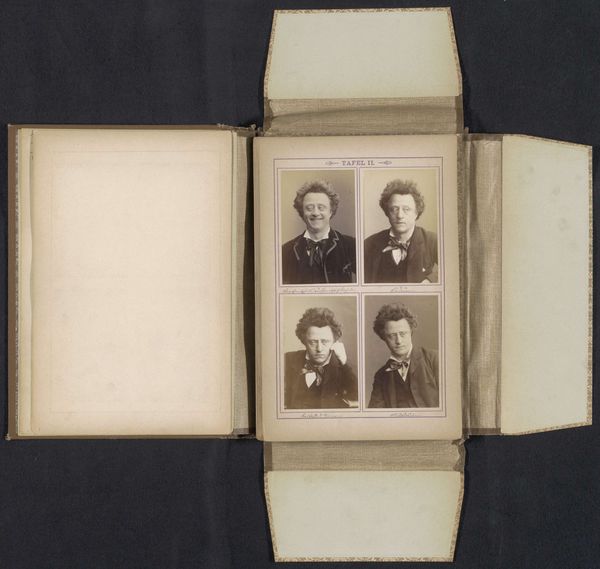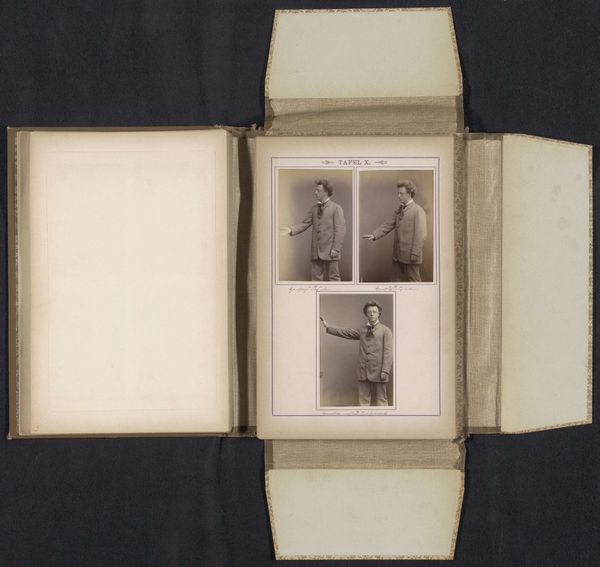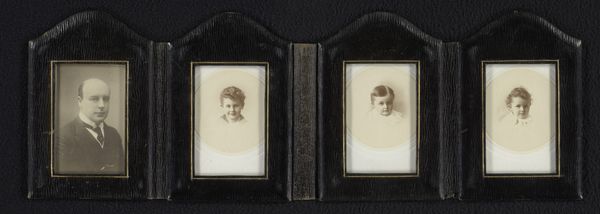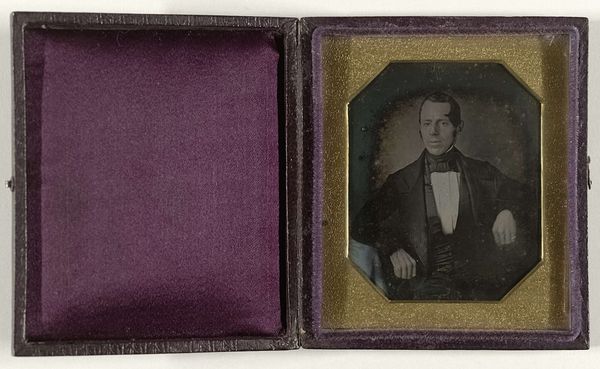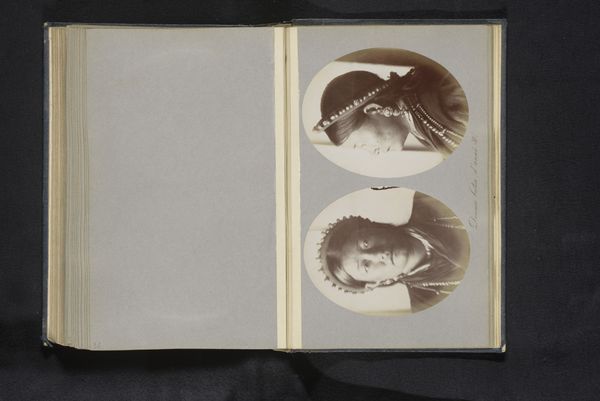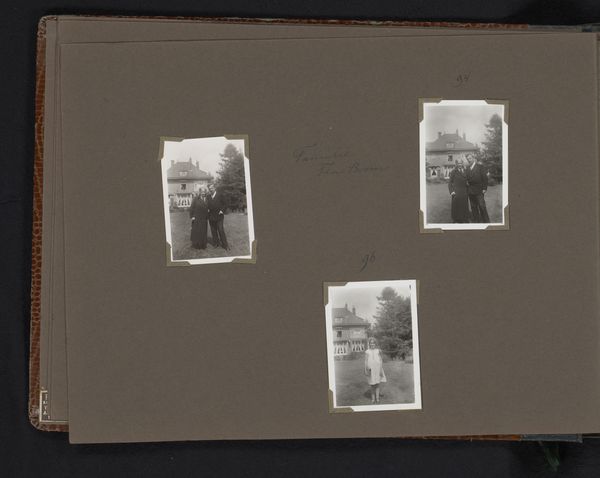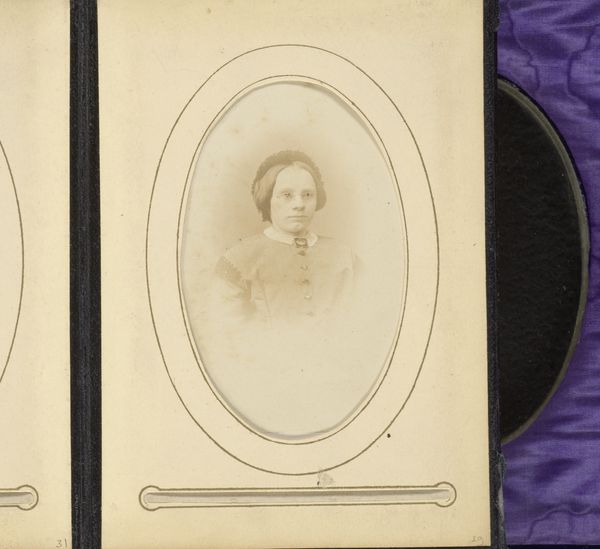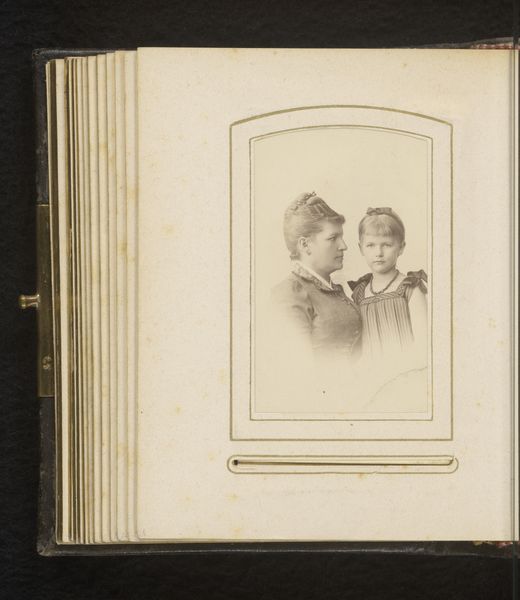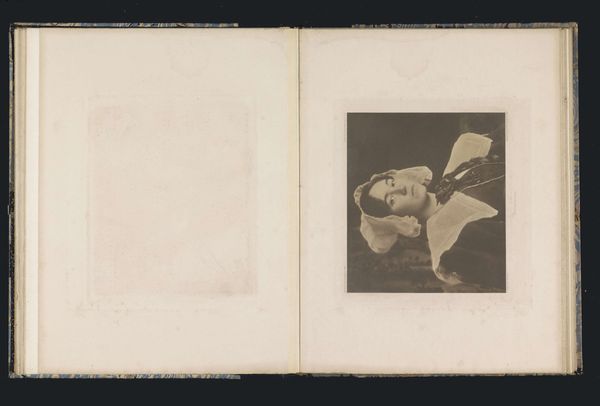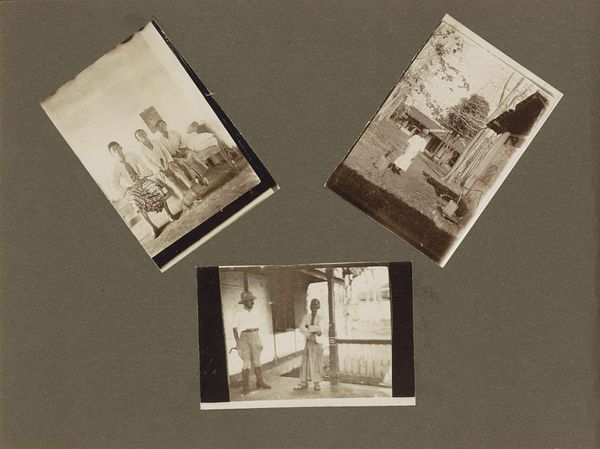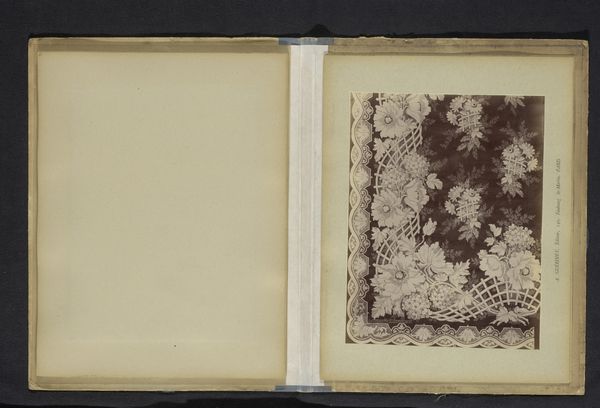
Drie portretten van een man met gezichtsuitdrukkingen van ademloos staren, ontzetting en ziekte before 1886
0:00
0:00
photography, albumen-print
#
portrait
#
self-portrait
#
photography
#
historical fashion
#
history-painting
#
albumen-print
Dimensions: height 245 mm, width 160 mm
Copyright: Rijks Museum: Open Domain
Curator: What strikes me immediately are the tonal contrasts within each of these photographic portraits. The shadows, especially around the eyes and neck, contribute to the expressive character of the images. Editor: This is 'Drie portretten van een man met gezichtsuitdrukkingen van ademloos staren, ontzetting en ziekte', which roughly translates to 'Three portraits of a man with facial expressions of breathless staring, dismay and sickness,' created before 1886, as an albumen print. It’s interesting to consider the socio-historical context and function of producing such a print during this period. What commentary was the artist trying to produce through these emotive displays? Curator: That's a wonderful question. Focusing on purely the formal, structural elements, one sees a clear narrative progression, an escalating arc of emotion contained within the simple geometric framing. The subject is placed centrally within each frame, emphasizing the face, so our eye is drawn to it repeatedly and intensely, almost claustrophobically. Editor: True, but I think we must dig deeper into the mode of its production as an albumen print. Photography was relatively novel back then, right? The availability of the materials needed, the technical proficiency required—it was all pretty restricted, often available to people from privileged backgrounds, and those conditions greatly inform this artwork and what was communicated. Curator: And yet, the very materiality, the light sensitivity of the albumen paper itself, contributes to the overall effect. The slightly faded quality adds a layer of timelessness, underscoring the universality of human emotion. The poses also echo classical art tropes while simultaneously undermining them with this modern technology and sensibility. Editor: Perhaps the artist was subverting conventions of portraiture to signal broader changes and unrest among a rising bourgeoisie who could now afford to purchase such prints, and who could produce themselves in a historical visual culture they otherwise wouldn't have participated in before. What about the audience of such prints in photographic albums or other methods of distribution? These photos weren't exactly shown on gallery walls, were they? The artist's labor conditions must have factored in as well... Curator: I concede the historical influences are certainly relevant, but ultimately, it's the powerful interplay of light, shadow, and composition that arrests the eye and provokes thought. Editor: Indeed. Contemplating art such as this print from before 1886 allows us to see how media and consumption habits have since changed, but ultimately that people have remained remarkably similar through it all.
Comments
No comments
Be the first to comment and join the conversation on the ultimate creative platform.
